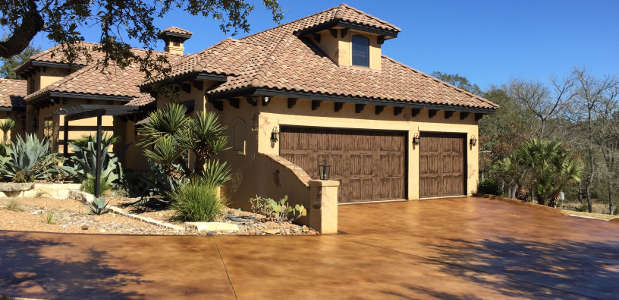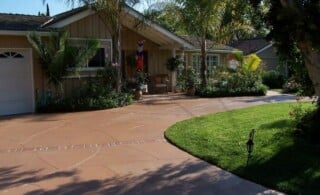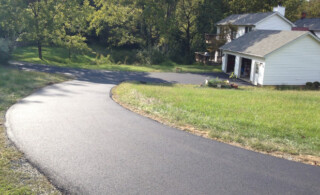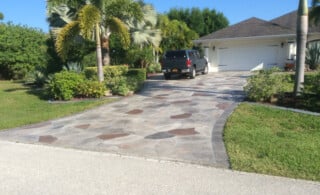
Driveway-paving is one of those blanket terms that gets tossed around every time a homeowner’s concrete slab cracks or a new driveway needs to be poured. Here’s a quick list of the three most popular driveway-paving materials and the plusses and minuses of each.
Asphalt Paving
Asphalt is a great place to start when discussing driveway paving materials. It’s relatively inexpensive to pour, especially on larger jobs, plus it is easy to maintain. As long as you regularly seal your asphalt driveway, it should serve you well and look great for years to come. Asphalt also makes for an excellent choice if you live in an area that experiences extreme cold spells. It is much more weather-resistant than its main rival, concrete, because of its ability to expand and contract without damage. On the downside, asphalt doesn’t offer many design options. Black and flat are the extent of your choices there. And you need to be careful when it comes to plowing asphalt drives, since it is more susceptible to damage from large plows and other machinery.
Concrete Paving
Perhaps the most widely used material out there is good old concrete. As far as driveways are concerned, it’s tough to beat. Concrete is tough, virtually maintenance free, easy to repair, and it makes for easy snow removal and cleaning. About the only reason to consider another material is if you live in a climate where it gets extremely cold. Concrete can crack and deteriorate in harsh weather, though even in the coldest climes these issues tend to be isolated ones and not a widespread problem.
The biggest knock against concrete used to be looks. Drab, gray slabs just don’t turn many heads. Not the case anymore. By coloring or stamping your concrete, you can transform your new concrete driveway into something the whole neighborhood will be sure to admire. In fact, concrete stamping has come to the point where a quality company can create colors and textures that will fool even the most discerning eye. Whether you want your driveway to resemble brick, stone pavers, tile or a combination of the above, qualified professionals can make it happen at a fraction of the cost of the real thing.
Paving Stones and Brick
The final driveway-paving materials we’ll mention here are paving stones and bricks. If good looks are your primary concern, this is the way to go. Interlocking concrete paving stones are by far the most popular option. They are nearly impossible to discern from cobblestone, riverstone, and other traditional materials, and can be arranged in just about any design you can think of. Of course, if you’re a stickler for authenticity, real stones can be laid instead for a much higher price. As for brick, authentic brick pavers are an option, as are longer lasting concrete imitations. The downsides here are cost (you’ll pay quite a bit more if you go this route), and regular maintenance. If you live in an area that sees a lot of the snowfall in winter, you’ll find that these are pretty tough surfaces to keep clear.
Talk to the Pros
When it comes to working with any of these driveway-paving materials, it’s best to leave installation to the experts. Your back and knees will thank you for it, and in the end you’ll have a better looking and longer lasting driveway by going with a professional. Do your research on average costs involved, then talk to a concrete contractor, asphalt paving company, or other paving specialist to get your new driveway project underway.
 About Heated Driveways
About Heated Driveways  Concrete Resurfacing – Process & Options
Concrete Resurfacing – Process & Options  How to Protect Your Driveway
How to Protect Your Driveway  Asphalt Paving
Asphalt Paving  Stone and Gravel Driveways
Stone and Gravel Driveways 

It is good to know that you can color or stamp your concrete now to make it look more attractive or matching to your style of home. We want to use concrete because it is so solid and virtually maintenance-free, but we were worried about not being able to match our darker colored house. We will have to consider using concrete still because it can be stamped or even colored now.
Asphalt also absorbs noise more easily than concrete and its bumpy texture gives it added traction, an important consideration in areas with lots of rain and snow. Excellent info, thanks for sharing!